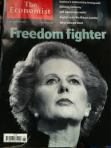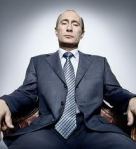The jury is out on the emerging leadership maps of the 21st century. In this first report, we hear the summing up by the judge dealing with the evidence of the rise of rational belief systems from the time of Plato to the 18th century enlightenment and beyond
Members of the jury. You have the responsibility to evaluate the credibility of the case for and against the leadership theories of the 21st century. To do so, you have to assess the accounts of witnesses brought forward by the prosecution and the defense. The theories placed before you are: Level 5 leadership, Distributed leadership, trust-based leadership, creative leadership, positive leadership, authentic leadership, sustainability leadership, discursive leadership, visionary leadership, charismatic leadership, and transformational leadership,
The theories brought before you are those that have become more powerful since the start of the millennium. Before I summarize the evidence, I believe it will be helpful if I outline the historical background to these theories, and particularly the influence of the dominant rational model, accused of being the ring leader of the entire group.
You will recall hearing from several witnesses that the influential leadership theories of the 20th century were broadly considered to be based on a dominant belief system in the effectiveness of rational actions informed by rational reasoning. That is to say, leadership was the execution of rational behaviours by rational actors.
The advocates of rationality have pointed to the great advances made through application of such rational behaviours for over two millennia. Two thousand years, members of the jury. Rationality, it has been claimed, was worked out as a means of establishing truths about the material world, and the worlds of science and mathematics. Many centuries later a new philosophic approach to rationality was worked out which claimed it to be the key that unlocked human consciousness from a state of ignorance or unenlightened beliefs. You heard the philosopher Immanuel Kant state that [I quote] “immaturity is the inability to use one’s own understanding without the guidance of another.” In other words, enlightenment is the process of undertaking to think for oneself, to employ and rely on one’s own intellectual capacities in determining what to believe and how to act.
The French academician René Descartes gave evidence of his rationalist system of philosophy and of the objectivity which reveals reality. The Enlightenment is sometimes called “the Age of Reason”. Its leading philosophers followed Descartes’s attempts to deal with the issue of objectivity and the reality of what we perceive and believe to be true.
The enlightenment ushered in an age of rationality and modernity as science and the scientific methods of analysis helped in the advances in industrial practices. An age of modernity in thinking and creating had replaced earlier less enlightened ages.
By the 20th century, the scientific approach of rationality, if I may use a popular expression, appeared to be the only show in town. As I have explained it, I have not yet made an important point. The rational model has indeed been dominant for over two centuries. Dominant but not, if I am to be precise, utterly without rivals. There were other shows in town, and it is witnesses of these that were introduced by the prosecution, who argue that they remain muted as evidence of the excessive power being wielded by the dominant rational model in leadership theorizing.
I will now move to the ten theories and the evidence of the influence of the dominant rational model.
[To be continued with the judge’s summing up of the ten theories]
Level 5 leadership,
Distributed leadership,
trust-based leadership,
creative leadership,
positive leadership,
authentic leadership,
sustainability leadership,
discursive leadership,
visionary leadership,
charismatic leadership,
transformational leadership.
Expert witness statements
Matheson, Carl, “Historicist Theories of Rationality“, The Stanford Encyclopedia of Philosophy (Winter 2011 Edition), Edward N. Zalta (ed.),
Bristow, William, “Enlightenment“, The Stanford Encyclopedia of Philosophy (Summer 2011 Edition), Edward N. Zalta (ed.),



 Posted by Tudor Rickards
Posted by Tudor Rickards 






 Click for regular updates
Click for regular updates